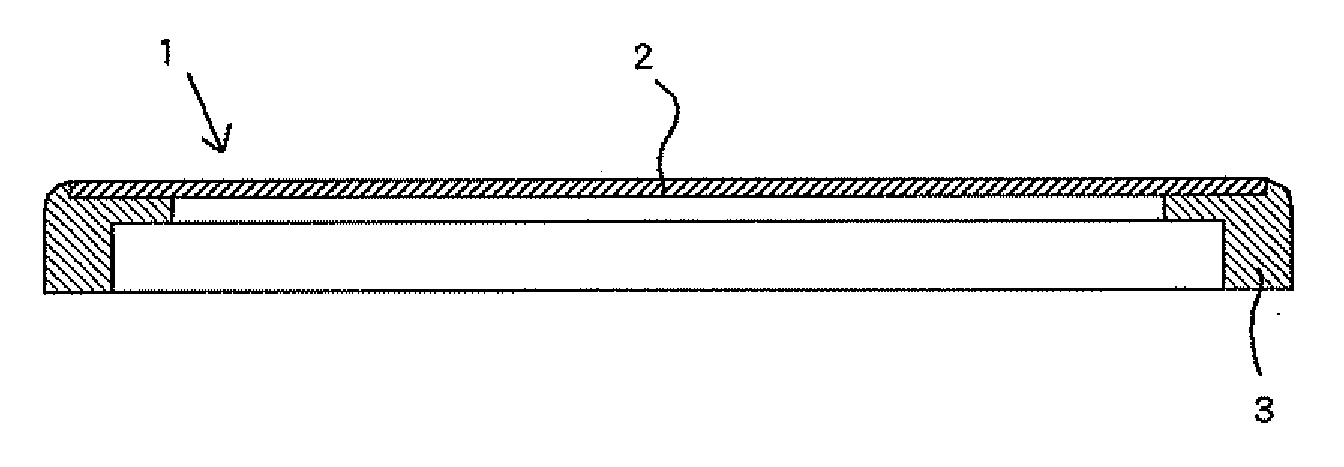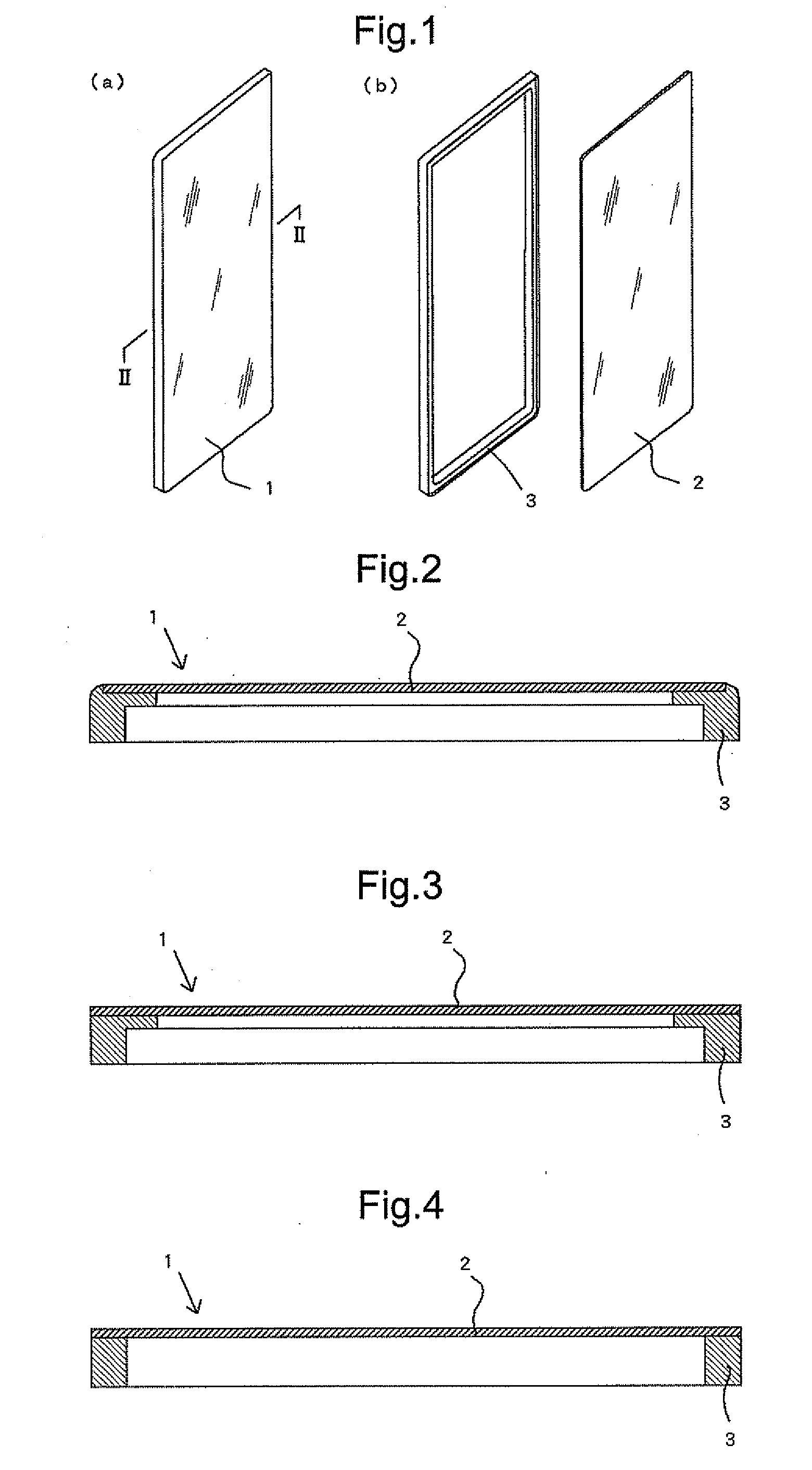Housing Case, Method for Manufacturing Housing Case, and Glass Insert Molding Die Used in Same
a housing case and glass insert technology, applied in the direction of casings/cabinets/drawers casings with display/control units, etc., can solve the problems of hard coating layer, small electric devices and communication devices, such as digital audio players and mobile phones, that are often subject to impact on their surfaces and other problems
- Summary
- Abstract
- Description
- Claims
- Application Information
AI Technical Summary
Benefits of technology
Problems solved by technology
Method used
Image
Examples
example 1
[0122]A glass plate of 88 mm in length, 38 mm in width, and 1 mm in thickness was prepared, and a circular opening for an operation panel was provided in the glass plate. A decorative layer was then formed on one side of the glass plate except a display window for a liquid crystal screen by using screen printing along with an ink containing a coloring agent and a polyester resin as a binder. An adhesive layer for glass made of a polyester resin, a primer layer made of a polyester resin, and an adhesive layer for resin made of a vinyl chloride / vinyl acetate / acrylic resin were then sequentially formed on the entire periphery of the undecorated side of the glass plate by using screen printing. A flat plate was thus obtained.
[0123]The flat plate was introduced into a molding die comprising a movable die and a stationary die, and secured in a predetermined position on the cavity surface through vacuum suction. After the molding die was closed, a molten polyacrylic resin was injected thro...
example 2
[0124]A glass plate of 88 mm in length, 38 mm in width, and 1 mm in thickness was prepared, and a circular opening for an operation panel was provided in the glass plate. A decorative layer / adhesive layer for glass was then formed on one side of the glass plate except a display window for a liquid crystal screen by using screen printing along with an ink containing a coloring agent and a polyester resin as a binder. A primer layer made of a polyester resin and an adhesive layer for resin made of a vinyl chloride / vinyl acetate / acrylic resin were then sequentially formed on the entire periphery of the decorated side of the glass plate by using screen printing. A flat plate was thus obtained.
[0125]The flat plate was introduced into the molding die comprising the movable die and the stationary die, and secured in a predetermined position on the cavity surface through vacuum suction. After the molding die was closed, a molten polyacrylic resin was injected through the gate to fill the ca...
example 3
[0126]Example 3 only differs from Example 1 in that the adhesive layer for glass, the primer layer, and the adhesive layer for resin were sequentially formed on not only the periphery of the glass plate but also the entire surrounding portion of the opening in the undecorated surface of the flat plate to form a flat plate; a rectangular resin frame and a circular opening resin frame were formed by using injection molding; and at the same time, the resin frame and the opening resin frame were bonded to the undecorated surface of the flat plate with the adhesive layer for resin, the primer layer, the adhesive layer for glass interposed between the resin frames and the undecorated surface of the flat plate.
PUM
| Property | Measurement | Unit |
|---|---|---|
| molding shrinkage rate | aaaaa | aaaaa |
| thickness | aaaaa | aaaaa |
| thickness | aaaaa | aaaaa |
Abstract
Description
Claims
Application Information
 Login to View More
Login to View More - R&D
- Intellectual Property
- Life Sciences
- Materials
- Tech Scout
- Unparalleled Data Quality
- Higher Quality Content
- 60% Fewer Hallucinations
Browse by: Latest US Patents, China's latest patents, Technical Efficacy Thesaurus, Application Domain, Technology Topic, Popular Technical Reports.
© 2025 PatSnap. All rights reserved.Legal|Privacy policy|Modern Slavery Act Transparency Statement|Sitemap|About US| Contact US: help@patsnap.com



